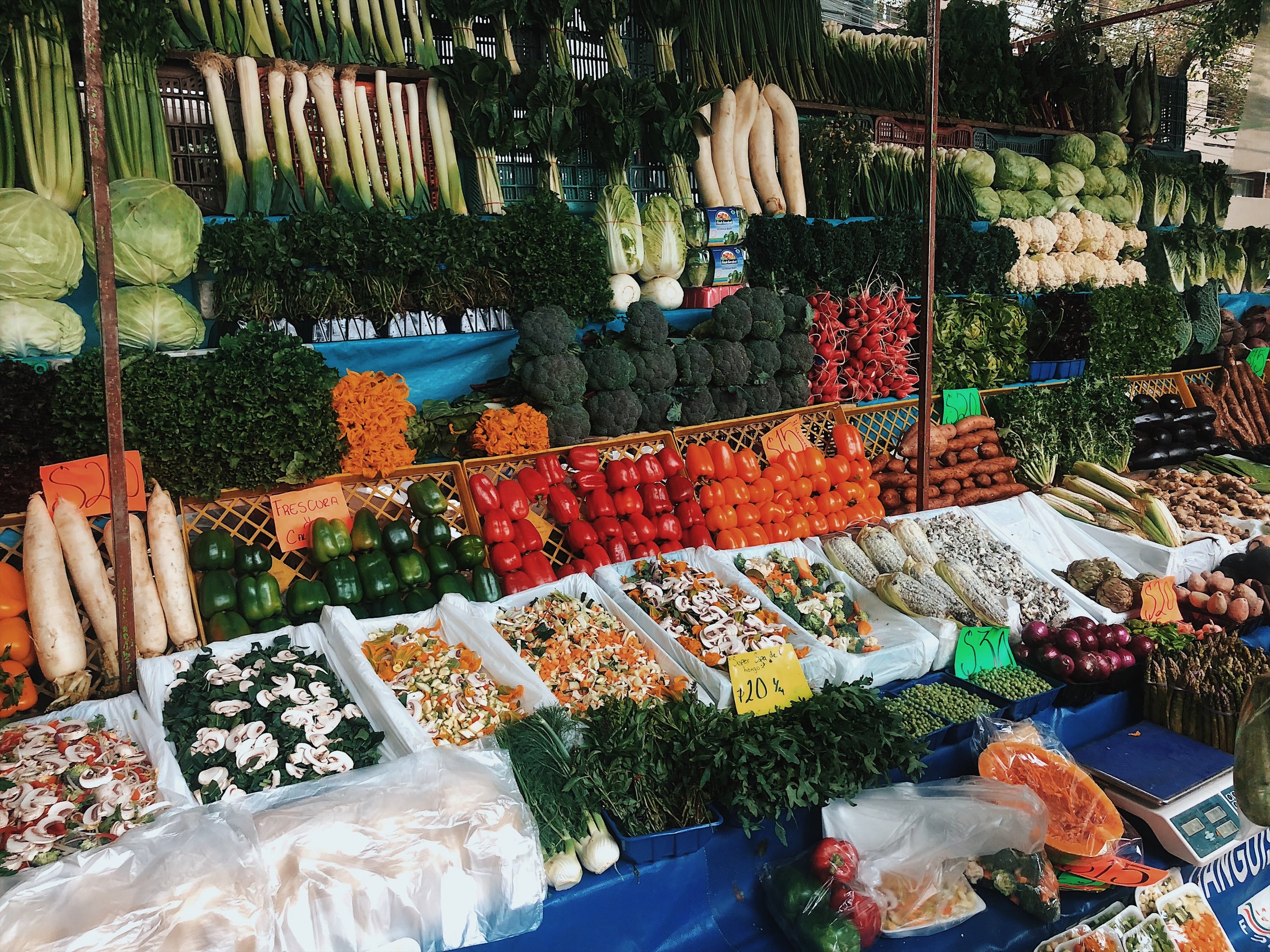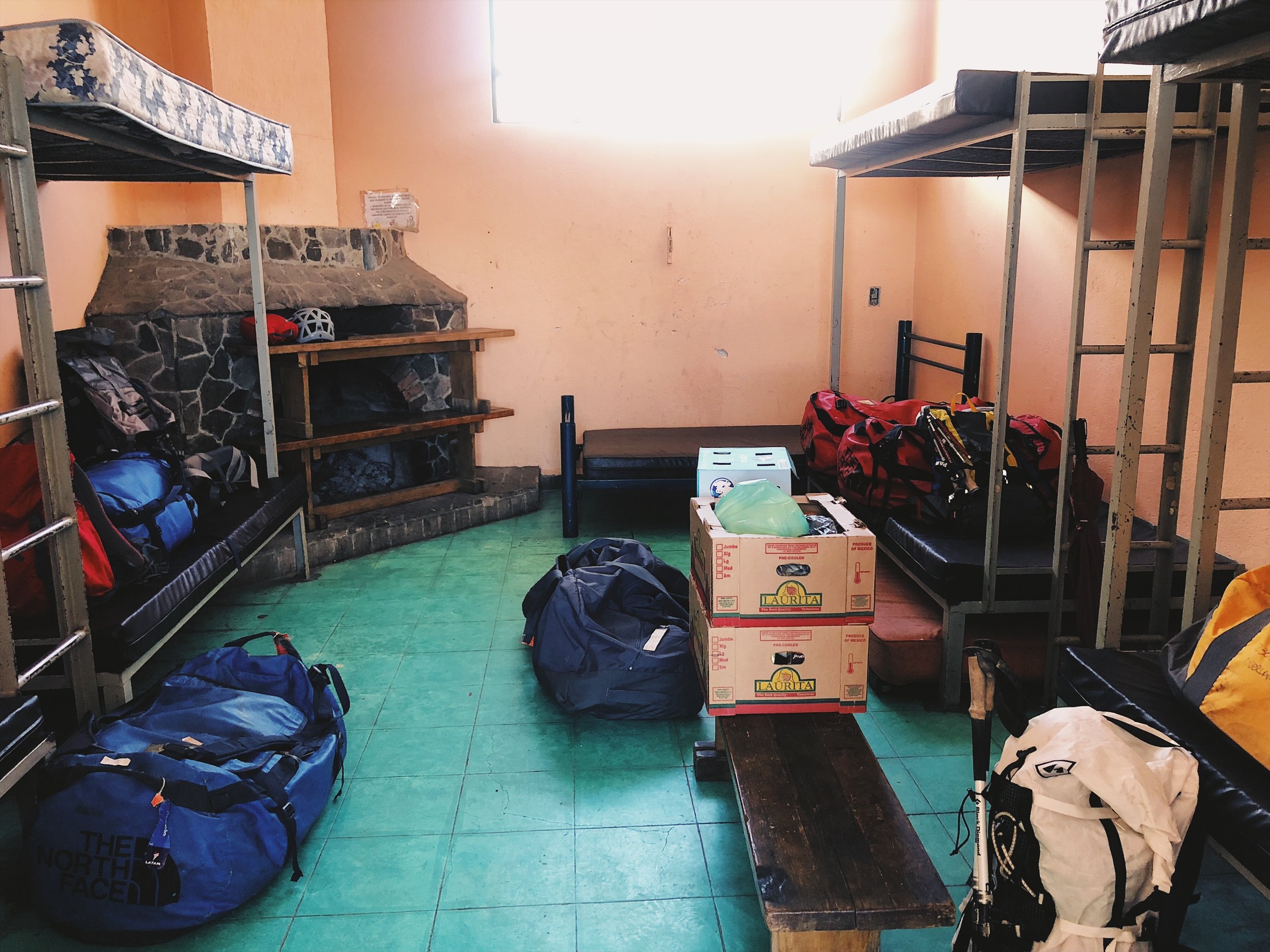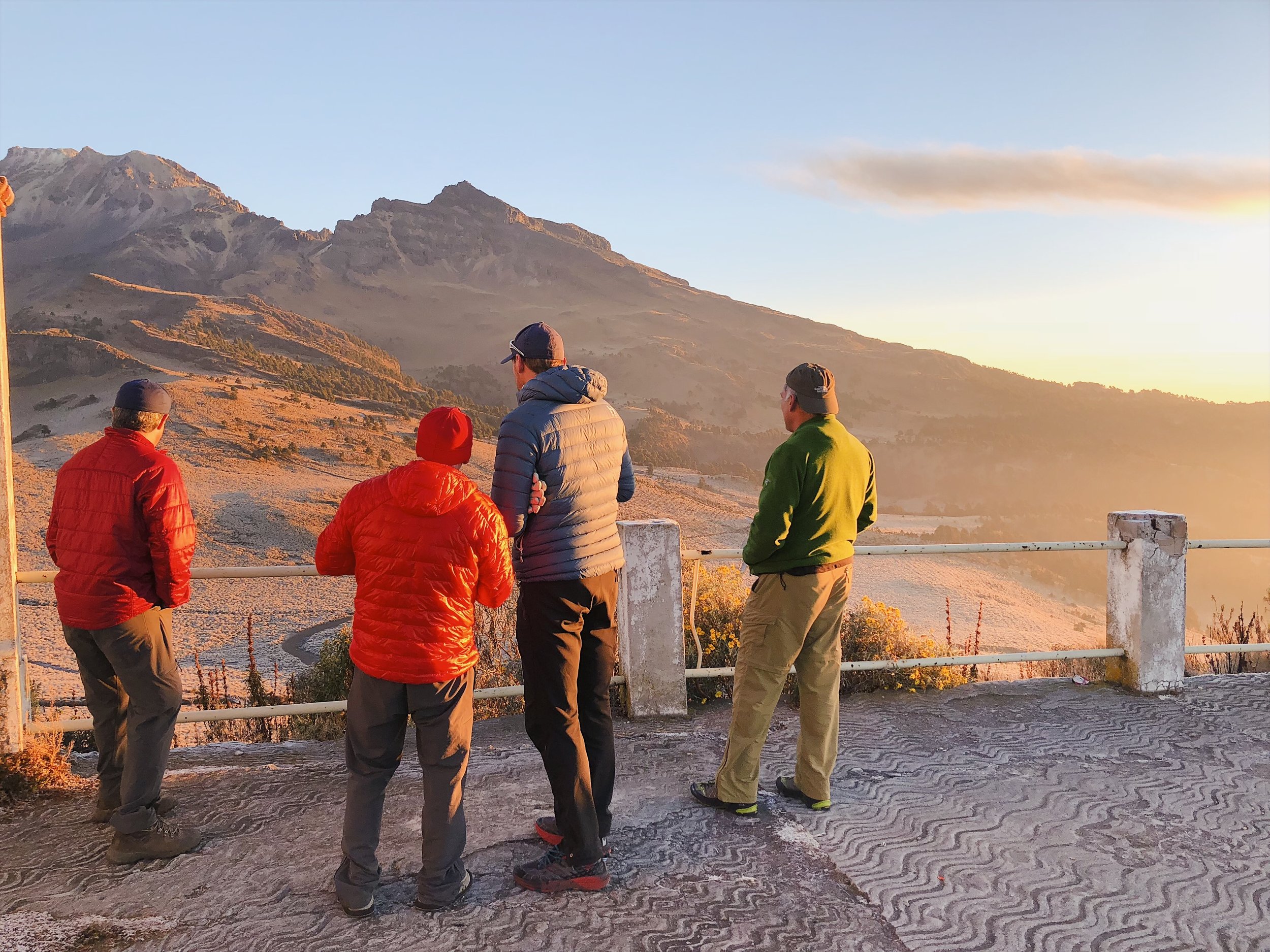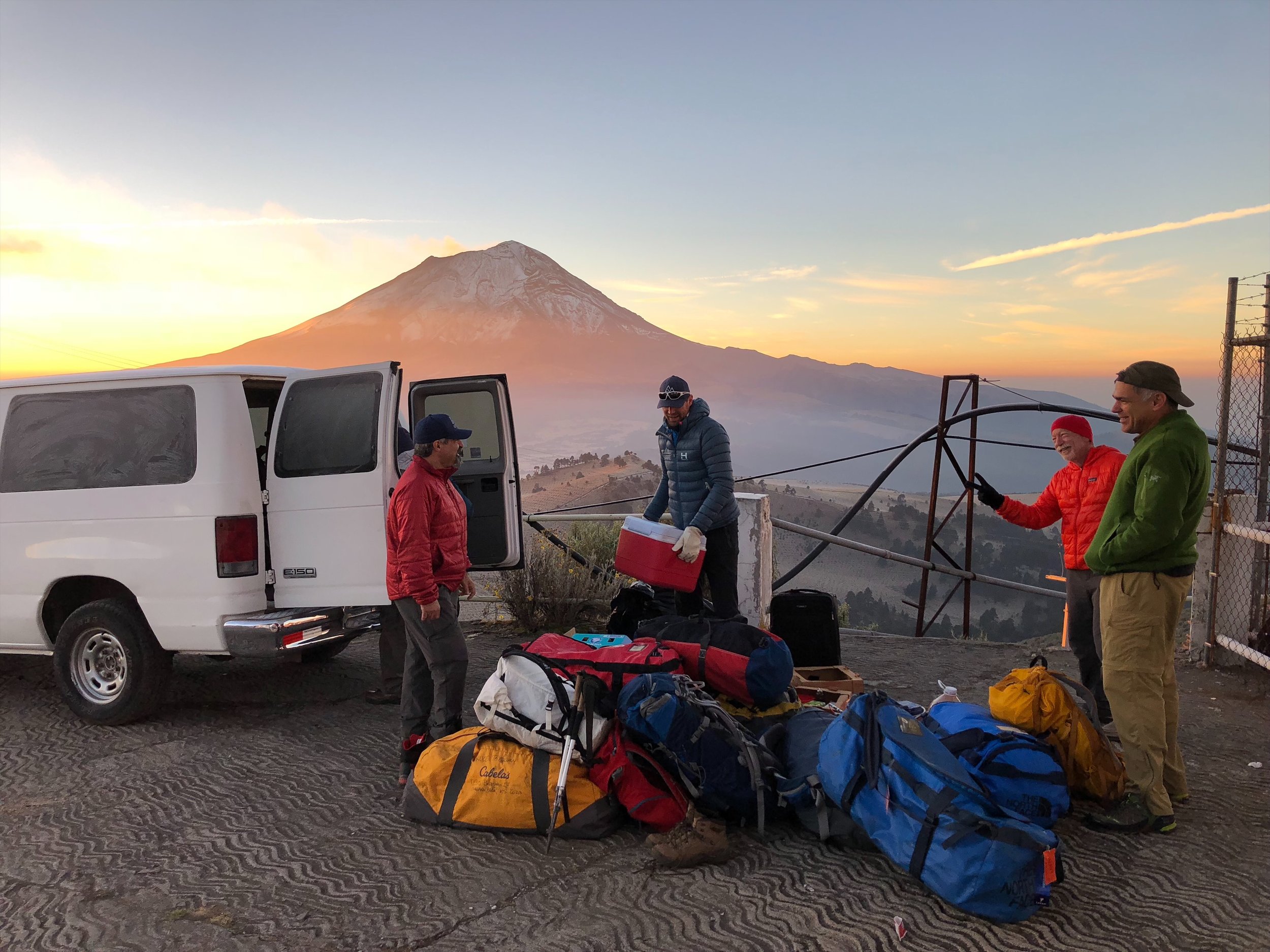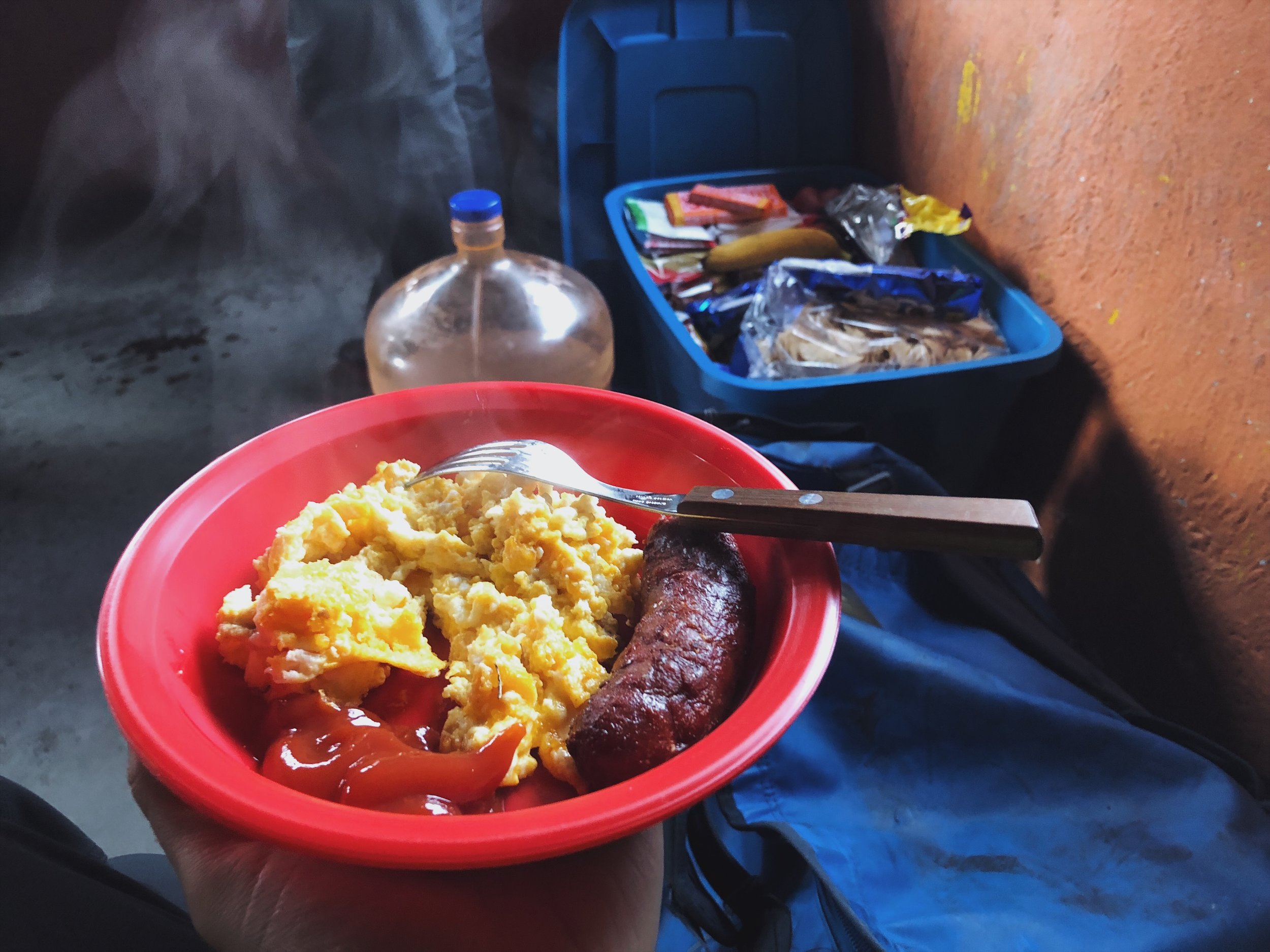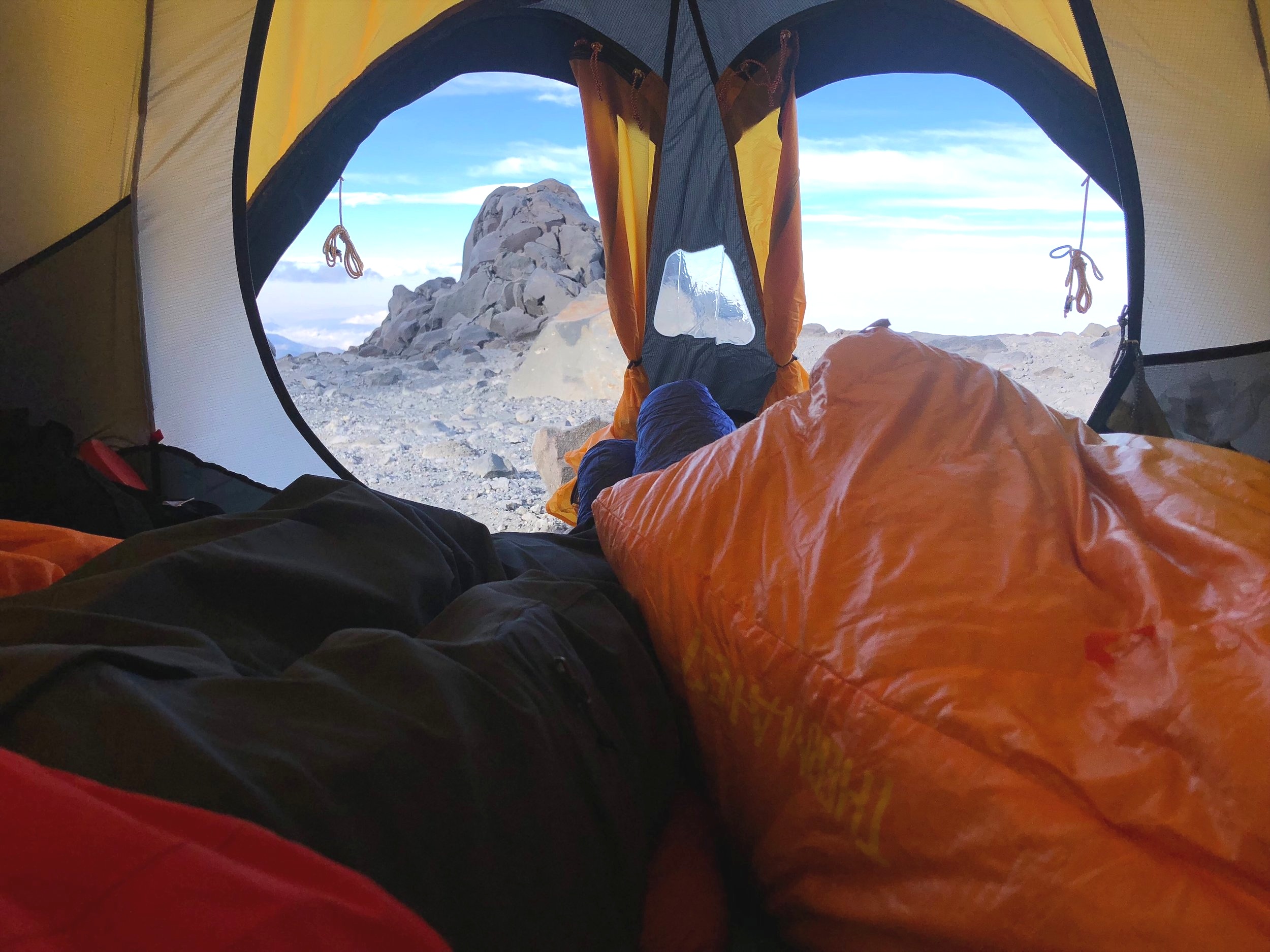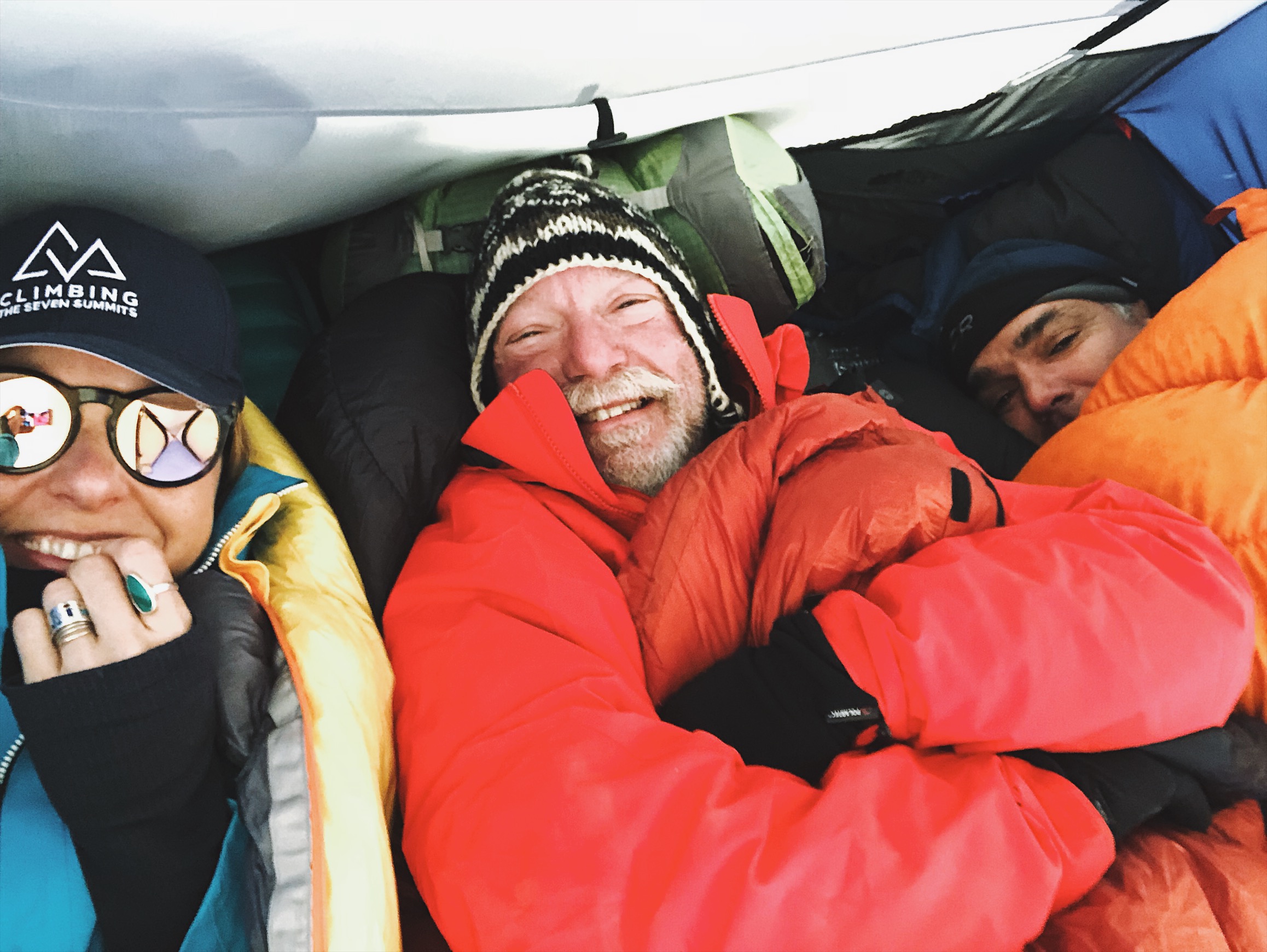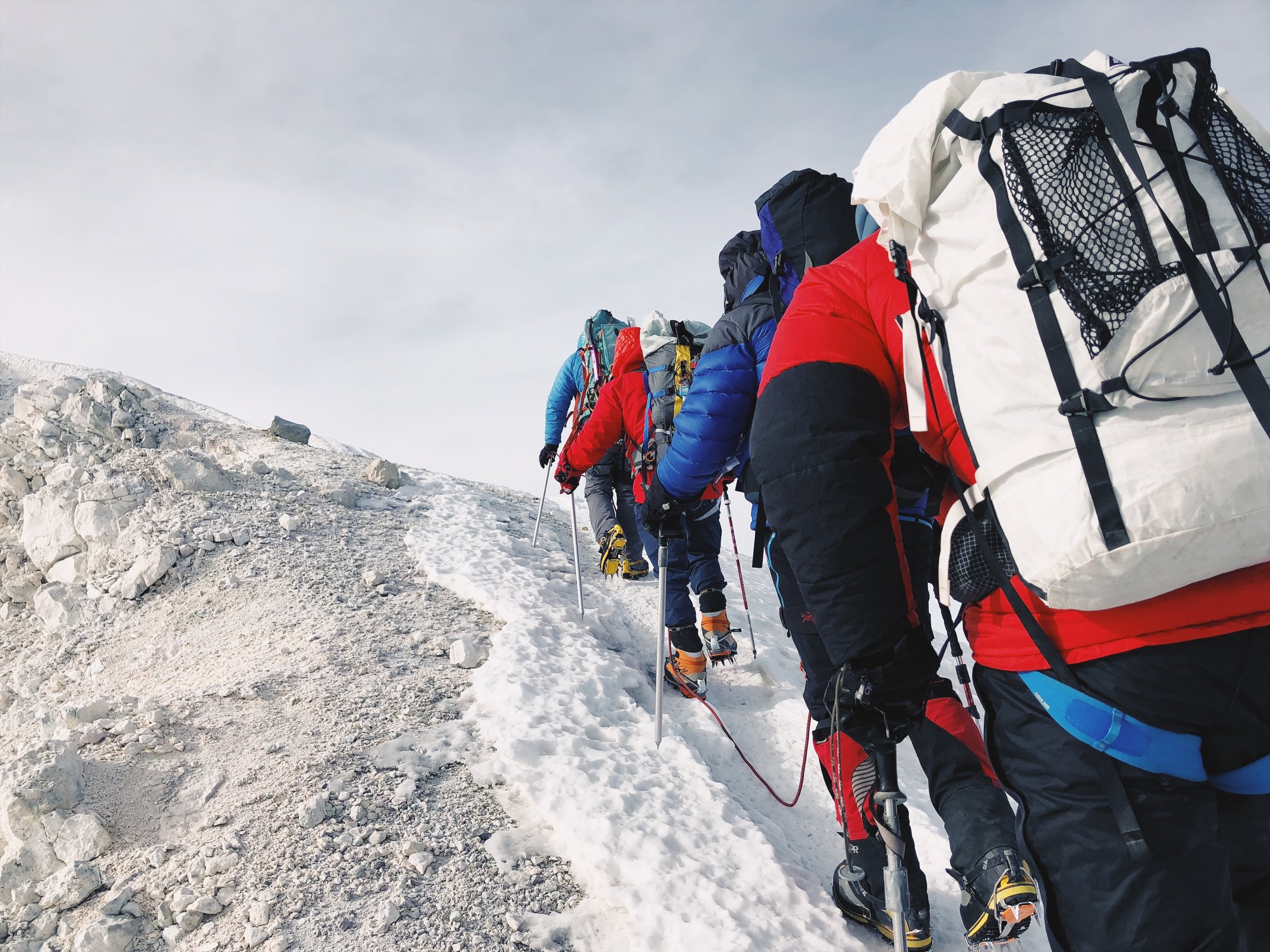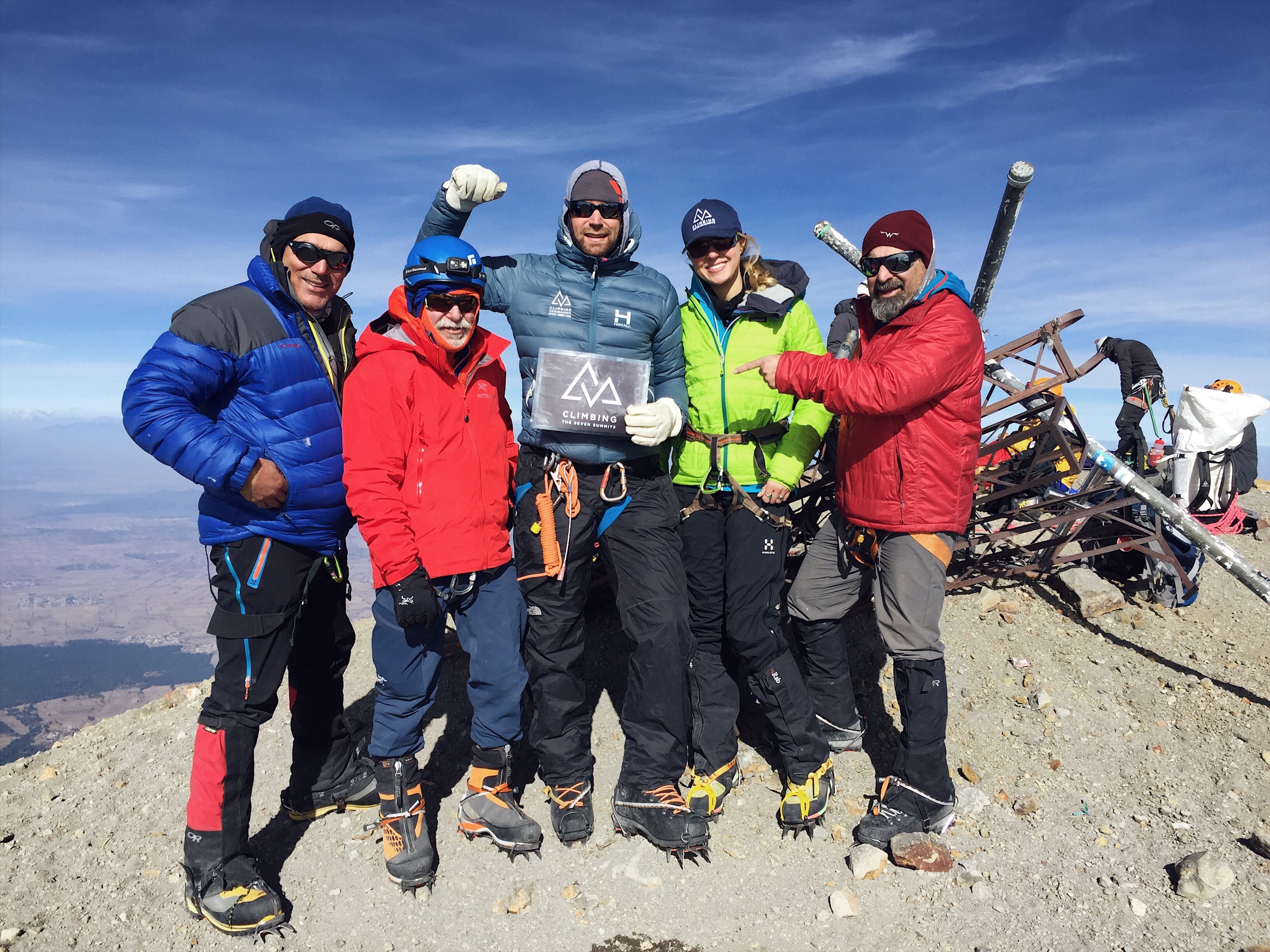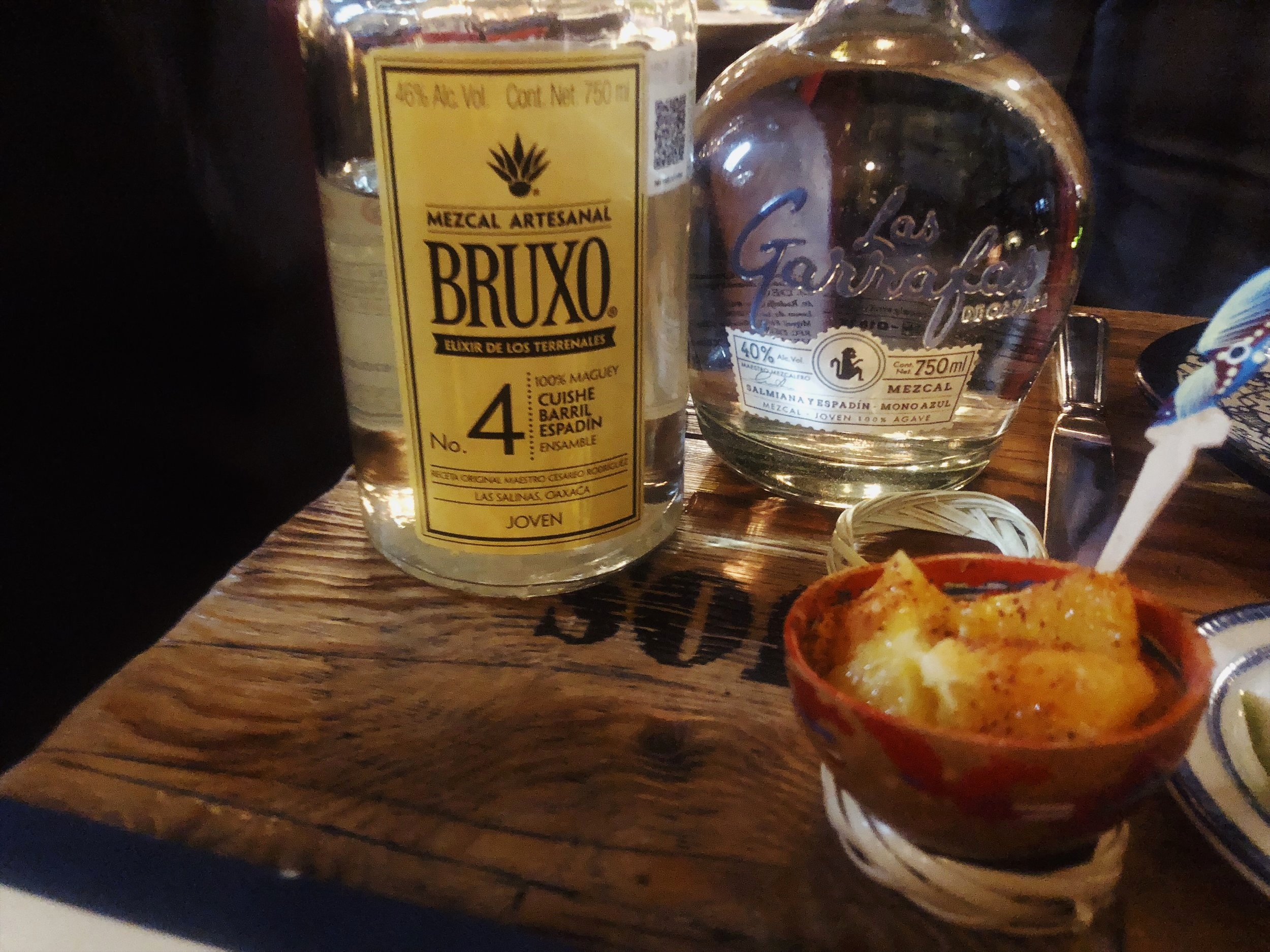I was recently introduced to Climbing the Seven Summits, which leads customized expeditions around the world, but as made obvious by the company name, has a particular focus on the highest point on every continent, i.e. the Seven Summits.
CTSS founder Mike Hamill is an industry vet, with 6 Everest summits under his belt (and countless other peaks bagged), and recently broke out on his own to form CTSS, recognizing the need for a more specialized / customized service in the mountaineering / climbing world. While his speciality is the Seven Summits (he wrote the guidebook), he leads trips around the globe and strives to make clients feel comfortable / adequately prepared ahead of what in most cases end up being life-changing climbs. Have you seen the elevations of Seven Summits climbs? Those puppies are not a walk in the park - so all hand holding, pre-trip consulting, and emotional support is welcomed (and a savvy business move by CTSS)!
In the case of a big expedition like Everest, CTSS aims to get as many climbers as possible out on an Orizaba climb in an effort to facilitate team bonding and provide an opportunity for a fitness check-in, a few months ahead of April Everest expeditions.
While not planning on climbing Everest, I was looking for a challenging climb with like-minded, go-getter type of people, so when given the opportunity to climb with a bunch of people training for an upcoming Everest bid, how could I say no? It would be a perfect opportunity to test my abilities / fitness, and get some beta on how to best train and prep for a future potential 8000m climb, Everest or otherwise.
For aspiring Orizaba climbers or potential CTSS clients, here’s what we got up to over the week (spoiler alert: it involves lots of tacos + burning off said tacos), and some key takeaways:
DAY ONE: ARRIVE IN MEXICO CITY
Jetlagged, I wandered around a local Polanco farmer’s market, checked into my hotel (Hyatt Regency Mexico City), ordered room service (let’s be honest, I ordered guacamole. Lots of guacamole.) and went to bed. Not much more to tell here. 16 hours of travel is no joke.
DAY TWO: GEAR CHECKS, SEE THE PYRAMIDS, EAT ALL THE TACOS
While most of us show up to these trips relatively dialed in on our gear after having a number of expeditions under our belts, I always think a gear check day is important for one’s sanity. Did I forget my crampons? Did I remember to pack my gaiters at the last minute as I fed the dog and ran out the door to catch my Uber? Will my sleeping bag be warm enough for this particular trip?
Having a second opinion and last minute review of gear puts the mind at ease, and also offers an opportunity to discuss any last minute changes that might help make for a more successful expedition. We laid out our gear and got final approval that we were prepared. One less thing to think about.
Post checks (which we fortunately all passed with flying colors), we were off to the Teotihuacan pyramids and a nearby cooperative for the afternoon, where we took in an Aztec history/geography lesson, tried various iterations of mezcal (the smoky ones were my favorite), and consumed some of the most authentic tortilla soup you could ever imagine (all guilt free, knowing we would be climbing hard the rest of the week!).
Teotihuacan was the largest urban center of Mesoamerica before the Aztecs, almost 1000 years prior to their epoch, and to this day is one of the most noted archaeological attractions in Mexico. Definitely worth a visit. And while we didn’t get a chance to stop here on our way out, I would highly recommend that anyone visiting the region do so. History lessons + tacos in a volcanic cave? Uh, yeah, sign me up.
DAY THREE: CORTEZ PASS ACCLIMITIZATION HIKE, STAY AT POPO PARK
After some final shopping and trip preparations in Mexico City, we said goodbye to our urban creature comforts for the week and headed out to the mountains (finally!)
After a couple hours, we had arrived at Cortez Pass, a beautiful region where we could finally bask in the what we came here for: the mountains/volcanoes. In one direction, Popocatepatl (or “Popo” for short), an active stratavolcano, was pluming smoke at somewhat regular intervals, and in another direction, Ixtaccihuatl (or “Ixta” for short) could be seen in all of its glory on a beautifully sunny day.
We went for a few hour hike to shake out the cobwebs/jetlag and get our bodies used to being at a higher altitude, before descending back down to the Popo park area for one last night of sleep in a hotel bed / a final hearty meal.
DAY FOUR: HEAD TO CORTEZ PASS HUT, ACCLIMITIZATION HIKE ON IXTA
Well-rested, we started our day early with a hut breakfast and worked our way back up to Cortez Pass, everyone anxious to get our legs moving: it’s what we came here for after all! We dropped our gear and supplies off at the Cortez Pass hut, and shortly thereafter, started a climb up Ixta.
While some groups choose to fully climb/summit Ixta as an acclimitization for Orizaba, we opted to simply do a half-day hike in order to conserve energy for our real objective: Pico de Orizaba. There was no real need for us to push towards an Ixta summit, when a full day of hiking at altitude would do the trick. But make no mistake: the views were still awesome, our lungs were working hard, and I really didn’t feel like we had missed out on anything by not tagging the top.
DAY FIVE: LUNCH AT SERVIMONT, ARRIVE AT ORIZABA HUT
We started the day early, rising with the sun, as we had a long drive to get from Ixta to Orizaba before sunset - and a few final stops to make along the way. Popo was showing off bright and early, with not only clear skies providing impeccable views, but also one last volcanic poof goodbye as we packed up the gear into the van to depart the region.
About 2 hours from our final destination, the Piedra Grande hut on Orizaba, we stopped at a unique lodge in Tlachichuca called Servimont, where we would drop any gear not needed for the Orizaba camp/ascent. This wonderful lodge is managed by the Reyes family and has been involved in mountaineering activities in the Mexican volcanoes and outdoor adventures for four generations. Climbing memorabilia and maps line the walls, and certainly got us excited for our pending move into the mountains.
Servimont would serve as a sort of home base for the rest of our trip, as we planned to return for our last night post-summit before heading back to the city. Their staff was absolutely wonderful, and we met a handful of other Orizaba hopefuls, as Servimont seems to attract like-minded trekkers/climbers from around the world. A true focal point for the climbing community. By mid afternoon, both the team and our gear were piled into a 4x4 truck (necessary considering the rocky dirt roads en route to Orizaba) and we were on our way.
DAY SIX: PIEDRA GRANDE HUT, CARRY TO HIGH CAMP
We awoke at the Piedra Grande hut to clear views of the Pico de Orizaba summit as we downed coffee, eggs and chorizo, and spent the morning organizing our gear to determine what would be necessary up at high camp versus what could remain at the Orizaba hut.
While some climbers attempt the summit using the hut as a base camp, our group opted to establish a high camp instead, to give us optimal time to acclimatize, and maximize our chances of tagging the top. A smart move, I believe, considering we saw other climbers who tried to go hut > summit > hut falter and return to the hut unsuccessful, due to it simply being too big of a feat to do in one day, especially in inclement conditions.
About 4 hours of trekking directly uphill with heavy packs, through the beautiful base of Orizaba, up through the snowy labyrinth, we arrived at high camp, with a perfect view of our summit day objective: a couple hour scramble through scree, followed by a few hour glacier travel, and ultimately, the Pico de Orizaba summit. It was finally becoming real (and we all agreed: seemed achievable!). The team felt strong, and we were all excited/relieved to have a much clearer idea of what lie ahead.
We descended to the Piedra Grande hut, ate cheeseburgers, shared mountain stories, fears/motivations for climbing, and dreamed up future adventures; an absolutely picture perfect day in the mountains if I do say so myself.
DAY SEVEN: MOVE TO HIGH CAMP, PREPARE FOR SUMMIT DAY
It’s go time. We do one final survey of our equipment and grab any final items we will need. We had hoped for lighter packs today, but somehow, none of us seemed to be able to leave behind that last extra layer “just in case” of a supremely cold summit day (a decision we were later glad to have made), nor that extra food/water for camp that evening. Each of us was responsible for carrying up our own clothing / climbing gear, but we all carried a portion of the team gear load as well. Lest you neglect to realize, establishing a high camp means needing to bring up not only everything for summit day, but also all sleeping/eating/living equipment for the coming 24 hours, to ensure a healthy, happy, well-fed and hydrated team. Yup, that means hauling up many-liter water jugs, camping stoves/gas, and tent equipment, too. Oof.
We all justified our heavy backpack loads as Everest training, and got on with it, working our way back up the mountain to where we had left supplies the day prior.
By mid-afternoon, we had arrived to a very windy and cold - but absolutely stunning - high camp. We set up our tents, and crawled into our sleeping bags, where we would spend most of the rest of the evening - which would be an early one anyway in prep for the 3am wakeup call for dun dun dun, SUMMIT DAY. Snuggles were had by everybody; we had to find some way to stay warm!!
DAY EIGHT: SUMMIT ORIZABA AND DESCEND TO TlACHICUCA
3am came fast. 4am, our scheduled departure time, came even more quickly. I had woken up in the middle of the “night” with terribly swollen fingers (shout out to my rings for cutting off my circulation!) due to altitude, and was ready anyway to get my body moving. There’s nothing like the anticipation the night before a summit bid; sleep can be hard to come by when you’re rearing to GO. Ain’t no rest for the wicked... or something like that.
We slurped down as much oatmeal and tea as possible (whilst trying to avoid the howling wind from blowing dust into them), ensured our tents were secured, and set off into the early morning light. We moved slowly and steadily, leaving no man behind, and before we knew it, we were at the base of the glacier, putting on our crampons for the final few hours of climbing.
Not long after, the sun began to rise, greeting us with the most beautiful of scenery, a welcome morale boost for the team as we plugged along in frigid temps (remember how I said we all packed and had to carry up a few extra layers ‘just in case’? Boy were we glad for those on summit day. #worthit). My buff kept falling off of my face, and it only took 10 seconds of sitting around my neck for the breath (let’s be honest: snot) I had been exhaling to freeze, making it nearly impossible to put back on. It was cold.
We passed only one other group who had summited about 20 minutes ahead of us, but were otherwise the second party up the mountain. A few groups were about 20-30 minutes behind us, but it felt like we were up there alone and it was our summit and ours only. After overcoming a couple of false summits, we reached the top around 9:30am, where the sun was shining brightly and fervently, giving us (and more importantly, our snacks) a chance to thaw, before it would be time to head back down.
The descent to base camp was a beautiful one- and we even watched some hooligans from Colorado ski off of the summit (based on observation and conditions of the mountain, would not recommend this). It was entertaining, nonetheless.
But as if summitting Orizaba wasn’t enough, getting back to high camp was only the start of our day. We would then need to dismantle camp, repack our bags (with 2x the gear, since we had done 2 carries to high camp), and then make our way back down the mountain back to the original Piedra Grande hut. At the hut, we would gather any belongings left behind, pile back into our 4x4, and make our triumphant return to Servimont, hopefully in time for dinner and a much-deserved cerveza.
WOOF. It was long, and it was hard, and we all pretty much wanted to collapse after carrying all of our gear down lots of unstable scree (though none of us had QUITE as much gear as our local guide Ully pictured here) but we did it!
And quite honestly, we were all the better for it. Plus, it was great proof to each of us that we had trained sufficiently and were, indeed, ready to take on Everest in the Spring. Mission accomplished & spirits high.
We had only a few things left to do: drink local cerveza, eat to our hearts delight, shake the dust out of our gear for our flights the next day, and finally: enjoy a blissfully hot and refreshing shower.
I was asleep by 9:30.
DAY NINE: DEPART MEXICO CITY, SOAK IN THE MEMORIES
By 9am, we hit the road and headed back to Mexico City. The majority of the group was airport-bound to get home to their loved ones / jobs (ugh) but myself and one other opted to stay for an extra day to enjoy everything that Mexico City has to offer. We dropped our crew off at the airport, said our goodbyes, and promised to keep in touch. Most of the team (with me as the exception) would be reuniting at Everest in only a few short months, so agreed to coordinate on training plans / gear purchases, and looked forward to the promise of a short-lived separation and already quickly approaching reunion. Goodbyes are so much easier when they’re only “see you later”s.
As for the final two of us, we took full advantage of our last night in Mexico, taking in rooftop views, mezcal, and local cuisine, and then returned home the next day.
When I arrived home, jet lag had hardly even had a chance to wear off before I found myself reflecting on the trip, what we had accomplished, and feeling grateful for the incredibly inspiring group of friends I had made over the week.
…and as if you didn’t see this coming already: not one day later, I almost involuntarily found myself emailing the team to get the details on Everest.
What can I say: wild places, high peaks, and the incredible people they attract have an uncanny ability to infect, and not go away. I’ve caught the disease.
See you guys on Everest. *
(*Camp 2 or 3, I’m not insane enough (yet) to try and summit).
***
I leave you with these final words from Chris Kalman’s Climbing Manifesto, first published in Outdoor Journal in May 2018:
Don’t tell me how hard you climb. Tell me how you plan to change the world.
How can you use climbing as a tool to be a better human?
How can you take the minimalism of “fast and light” and apply it to your own consumptive life?
When you travel to climb, how will you make it worth the carbon footprint?
When you write about a place, how can you protect it from exploitation?
What can you do to improve the lives of others less fortunate?
How can you fight to protect the public lands where you recreate?
How can you fight to honor and vindicate the indigenous peoples those public lands were stolen from?
When you buy climbing equipment, don’t buy from anyone that engages in business practices that don’t align with your values. Your money is your mouthpiece. It’s your vote. Don’t shop deals. Shop values. Buy what sells you peace of mind.
When you consume climbing media, don’t consume anything that doesn’t align with your values. Clicks are dollars. Your attention is your pocketbook. If you think it is stupid, counter-productive, infantile, distracting, or simply banal, Do Not Click. Read something by an author that speaks to you. Educate yourself about something important. Sign a petition you care about. Donate to a charity you believe in. Don’t work on a climb. Work on learning to maximize your time.
When you go climbing, do it for pure reasons. Don’t spray. Don’t humble brag. Don’t overshare. Don’t hashtag because you’re starved for attention. Don’t play it cool. Don’t self-aggrandize. Don’t talk about numbers, period. Quit worrying about the size of your gut. Don’t be a dick. Don’t be a hypocrite. Don’t be a cynic. Don’t hate. Don’t be someone else. Don’t even measure up against someone else. Just be yourself. Be proud but not prideful. Try hard but don’t cuss. Be brave, not stupid. Be who your mom and dad taught you to be. Don’t be an ambassador of a brand, be an ambassador of humanity. Be respectful of the land.
Don’t stop climbing, just because it’s pointless. Don’t quit trying, just because it doesn’t matter. Everything matters. Cultivate passion. Work on your work ethic. Play because you can. Laugh. Smile. Smile more. Bring the smile home.
Keep your priorities straight.
Slowing down climate change is a necessity. Racial/gender/sexual equality is a necessity. Fighting fascism, corporate greed, xenophobia, oligarchy, fake news, death of ecosystems, and the longterm destruction of the world in favor of short term financial gains is a necessity.
Climbing is not a necessity.
Climbing is a coping mechanism. Climbing is fuel. Climbing is nourishment. Climbing is a tool.
Hone that tool. But don’t forget what it’s for in the first place.
Bring more equity, tolerance, compassion, and respect into the world.
Leave the world a better place.



